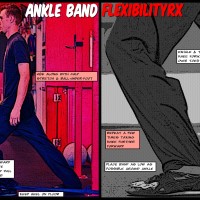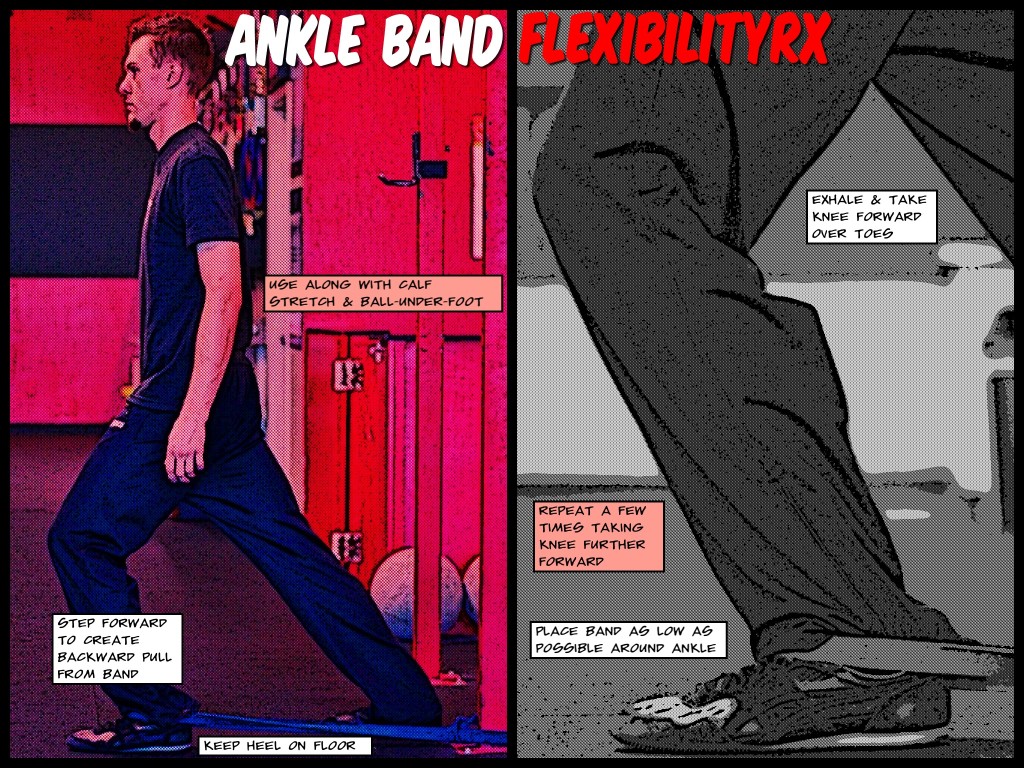
Ankle-Band Stretch
This ankle-band stretch is great for…
improving ankle dorsiflexion
Ankle-Flexibility is often an overlooked part of the squat.
The 7 Points of Performance for the Squat are:
#1: Weight on Heels
#2: Hips Below Parallel
#3: Knees-Out
#4: Upright Torso
#5: Lumbar curve (avoiding the ‘butt-wink’)
#6: Thoracic Position
#7: Arms Overhead
#1: Weight on Heels
Ankle flexibility will affect your ability to keep your weight on your heels. The restriction can be in the calves, bottom of the foot, or ankle itself (which this stretch is for).
#2: Hips Below Parallel
Limitation in ankle dorsi-flexion can limit hip-flexion – restriction squat depth
#4: Upright Torso
Oftentimes athletes that have a hard time keeping their torso upright will be lacking ankle flexibility, to see if the restriction is in the ankle, try placing a 15lb plate under your heel and then notice if it is easier to keep your torso upright.
#5: Lumbar Curve
If ankle ROM is limited, hip flexion is limited. Limited hip-flexion (squat-depth) can lead to a rounding at the bottom of the squat (‘butt-wink’). The hips posteriorly tilt (tuck-under) to make up for range of motion, which also causes rounding (flexion) of the low-back – setting up potential injuries to the low-back.
Two Tests for Ankle Flexibility
#1: Elevate the Heel & Reassess point of performance #4: upright torso
#2: Active Range of Motion (Ankle Up/Down)
This is a pass or fail test – the green area indicates sufficient range and the red suggests restriction in the ankle (possibly calves, front of the shin, or bottom of the foot). See if you feel restricted moving your foot up/down and then re-assess active range of motion and your squat after this ankle-band stretch.
– Kevin Kula, “The Flexibility Coach” – Creator of FlexibilityRx™
Tags: ankle band stretch, ankle flexibility, ankle mobility for squats, hips below parallel, squat depth, squatrx, torso upright


Leave A Reply (No comments so far)
You must be logged in to post a comment.
No comments yet